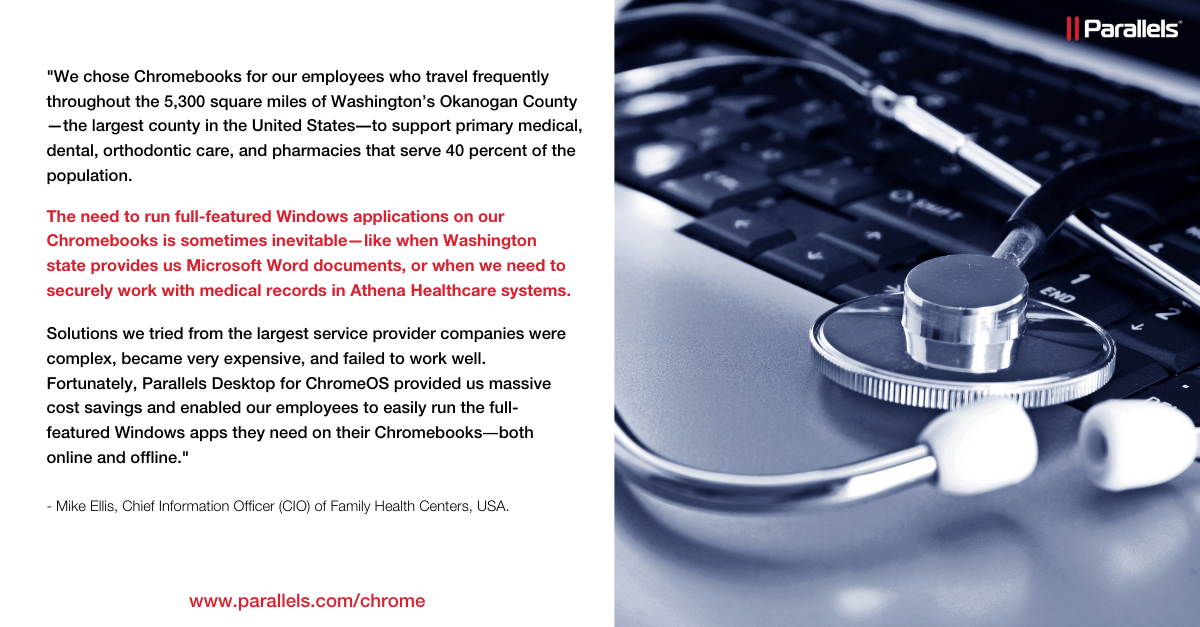

- PARALLELS DESKTOP FOR CHROMEBOOK FULL
- PARALLELS DESKTOP FOR CHROMEBOOK OFFLINE
- PARALLELS DESKTOP FOR CHROMEBOOK WINDOWS
So if you’re in a spreadsheet or Word document with a link but don’t want it to open in Edge, the system can handle that.
PARALLELS DESKTOP FOR CHROMEBOOK WINDOWS
You can configure links in Windows to open natively in Chrome OS. It’s little touches like this that extend the usefulness of Parallels on Chrome OS beyond what I originally expected, and I’m happy to see it.īut wait! It gets better. Files can easily be shared between the two OSes Parallelsīeyond that, the clipboard is also shared between the two operating systems, so you can copy something in Chrome OS and share it with Windows or vice versa.

It’s pretty seamless and makes your folders and files readily available to either OS at any time. Similarly, a new entry will be created with Windows folders-Docs, Pictures, Desktop, etc.-within the Chrome OS file manager. You can share folders from Chrome OS with Windows directly from Chrome OS’s file manager.

Windows also directly integrates with the Chrome OS file system. Files, Folders, and the Clipboard Are All Shared That’s about as seamless as you’ll get between the two, but honestly, it’s pretty damn slick. You can, however, run Windows fullscreen on a virtual desktop so you can easily switch between Chrome OS and Windows with a four-finger swipe on the touchpad. But you can’t combine the two that intimately. Parallels on Chrome OS doesn’t get that granular-it’s Windows or Chrome OS. For example, if you’ve ever used Parallels on macOS, then you’re probably familiar with Coherence-the feature that allows users to run Windows apps directly in macOS as if they were native. While Windows will run side-by-side with Chrome OS in a resizable and scalable window, it’s not entirely seamless. Windows will also suspend and resume instantly when the window is closed.
PARALLELS DESKTOP FOR CHROMEBOOK OFFLINE
That means it’s fully available offline and all changes made within the OS are saved directly to the device. Once the image has been downloaded, however, this virtualized Windows environment runs locally.
PARALLELS DESKTOP FOR CHROMEBOOK FULL
It Runs Locally for Full Offline Compatibility

From there, companies share the Windows image that users can download. Parallels for Chrome OS is currently managed entirely from the G Suite Admin console, so it has to be enabled for each user by the admin. I was also curious about this, but after seeing a demo of it directly from Parallels, it suddenly became more clear. You might be wondering why this is only available for Enterprise users. That doesn’t mean it’s not an exciting revolution for Chrome OS users on the whole, though, as the very existence of Parallels on Chrome OS could mean big things for the consumer platform, too. So unless you have a Chromebook through your employer, you probably won’t get to experience this. But here’s the catch: It’s only for Enterprise users. Today, Parallels is launching on Chrome OS, bringing a fully virtualized Windows environment to Chromebooks. And now, thanks to Parallels, the future I longed for can become a reality. And as much as I absolutely adore Chrome OS, there were times when I just needed Windows software. For many years of my life, a Chromebook was my only laptop.


 0 kommentar(er)
0 kommentar(er)
